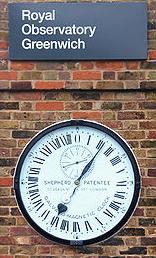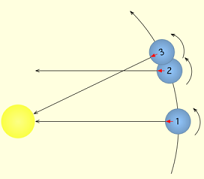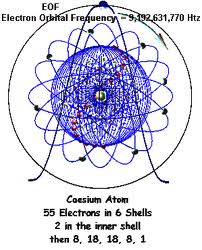 GMT (Greenwich Mean Time) is a timescale based on the position of the Sun
observed at the Royal Observatory in Greenwich, London.
UT (Universal Time) is a timescale based on the rotation of the Earth.
UTC (Coordinated Universal Time) is a timescale based on
a caesium atomic clock that synchronised with UT. Today,
UTC is the time standard by which the world regulates clocks and time.
GMT (Greenwich Mean Time) is a timescale based on the position of the Sun
observed at the Royal Observatory in Greenwich, London.
UT (Universal Time) is a timescale based on the rotation of the Earth.
UTC (Coordinated Universal Time) is a timescale based on
a caesium atomic clock that synchronised with UT. Today,
UTC is the time standard by which the world regulates clocks and time.
What Is Greenwich Mean Time (GMT)?
 Greenwich Mean Time (GMT) is the mean solar time at the Royal Observatory in Greenwich,
London.
Before 1 January 1972, GMT was used worldwide as a reference time independent of locations.
The meridian at Greenwich is also the Prime Meridian, where longitude
is defined to be 0 degree.
Greenwich Mean Time (GMT) is the mean solar time at the Royal Observatory in Greenwich,
London.
Before 1 January 1972, GMT was used worldwide as a reference time independent of locations.
The meridian at Greenwich is also the Prime Meridian, where longitude
is defined to be 0 degree.
Greenwich Mean Time (GMT) is calculated roughly like this:
- First, observe each day the actual noon time, which is the moment when
the sun reaches its highest point in the sky at Greenwich.
- Then, calculate the annual mean value of the actual noon time.
Because of Earth's uneven speed, the mean value may be up to 16 minutes
away from the actual noon time on some day.
- Finally, use this mean noon time as the GMT noon time, 12pm GMT,
to define the rest of the GMT timescale.
What Is Universal Time (UT)?
 Universal Time (UT) is a timescale based on the rotation of the Earth.
UT is more accurate than Greenwich Mean Time (GMT). UT is used as the reference time
worldwide since 1 January 1972.
Universal Time (UT) is a timescale based on the rotation of the Earth.
UT is more accurate than Greenwich Mean Time (GMT). UT is used as the reference time
worldwide since 1 January 1972.
As shown in figure on the right, the rotation of the Earth can be measured
based on the Sun or a far away star resulting 2 definitions for the period of day.
- A sidereal day is defined when the Earth
has rotated 360 degrees to face the same star again
and moved from position 1 to position 2.
- A solar day is defined when the Earth has rotated a little bit more
than 360 degrees to face the Sun again and moved from position 1 to position 3.
Universal Time (UT) has several versions:
- UT0 - Universal Time determined by observing the
diurnal motion of stars or extragalactic radio sources,
and also from ranging observations of the Moon and artificial Earth satellites.
- UT1 - Universal Time computed from observations of distant quasars
using long baseline interferometry, laser ranging of
the Moon and artificial satellites, as well as the
determination of GPS satellite orbits.
- UT1R - A smoothed version of UT1,
filtering out periodic variations due to tides.
- UT2 - A smoothed version of UT1, filtering out periodic seasonal variations.
- UT2R - A smoothed version of UT1, incorporating both the seasonal corrections
of UT2 and the tidal corrections of UT1R.
It is the most smoothed form of Universal Time.
- UTC (Coordinated Universal Time) - An atomic timescale that approximates UT1.
It is the international standard on which civil time is based now.
What Is Coordinated Universal Time (UTC)?
 UTC (Coordinated Universal Time) is a timescale based on
a caesium atomic clock that synchronised with UT.
Today, UTC is the time standard by which the world regulates clocks and time.
UTC (Coordinated Universal Time) is a timescale based on
a caesium atomic clock that synchronised with UT.
Today, UTC is the time standard by which the world regulates clocks and time.
UTC is based on International Atomic Time (TAI) with leap seconds added at irregular intervals to compensate for the Earth's slowing rotation.[2] Leap seconds are used to allow UTC to closely track Universal Time (UT1).
Since the difference between UTC and UT1 is not allowed to exceed 0.9 seconds, if high precision is not required, the general term Universal Time (UT) may be used.[6]
In casual use, when fractions of a second are not important, Greenwich Mean Time (GMT) can be considered equivalent to UTC or UT1. Saying "GMT" often implies either UTC or UT1 when used within informal or casual contexts. In technical contexts, usage of "GMT" is avoided; the unambiguous terminology "UTC" or "UT1" is preferred.[6]
Local Time Calculator by Location
 This local time calculator helps you
to calculate a local date and time for a selected location in the world.
Locations are sorted by country. Daylight Saving Time (DST) adjustments are included in the conversion.
This local time calculator helps you
to calculate a local date and time for a selected location in the world.
Locations are sorted by country. Daylight Saving Time (DST) adjustments are included in the conversion.
Current Date and Time by Regional Time Zone
 The list of current local date and time in each time zone region
represented by the largest city within the region.
333 local time zone regions are defined in the tz database (or zoneinfo database).
Coordinated Universal Time (UTC) offset of each region is also included.
The list of current local date and time in each time zone region
represented by the largest city within the region.
333 local time zone regions are defined in the tz database (or zoneinfo database).
Coordinated Universal Time (UTC) offset of each region is also included.
Local Time Converter by Location
 Having trouble to convert time to local time zones when scheduling a tele-conference?
Use our local time converter helping you
to convert a local date and time from one location to another location in the world.
Daylight Saving Time (DST) adjustments are included in the conversion.
Having trouble to convert time to local time zones when scheduling a tele-conference?
Use our local time converter helping you
to convert a local date and time from one location to another location in the world.
Daylight Saving Time (DST) adjustments are included in the conversion.
Local Time Converter by Time Zone
 Having trouble to convert time to local time zones when scheduling a tele-conference?
Use our local time converter helping you
to convert a local date and time from one time zone to another time zone in the world.
Daylight Saving Time (DST) adjustments are included in the conversion.
Having trouble to convert time to local time zones when scheduling a tele-conference?
Use our local time converter helping you
to convert a local date and time from one time zone to another time zone in the world.
Daylight Saving Time (DST) adjustments are included in the conversion.
World Map of Regional Time Zones
 World map of regional time zones defined in the tz database,
also called the zoneinfo database. Each local time zone region in the world
is named after a representative location in that region.
For example, "America/New_York" is the local time zone region represented by
the city of New York.
World map of regional time zones defined in the tz database,
also called the zoneinfo database. Each local time zone region in the world
is named after a representative location in that region.
For example, "America/New_York" is the local time zone region represented by
the city of New York.
Names and Locations of Regional Time Zones
 The complete list of 333 regional time zones in the world in the tz database (or zoneinfo database).
Name, location, country code and current date and time of each time zone are included in the list.
The representative location of each time zone is specified by its longitude and latitude coordinates.
The complete list of 333 regional time zones in the world in the tz database (or zoneinfo database).
Name, location, country code and current date and time of each time zone are included in the list.
The representative location of each time zone is specified by its longitude and latitude coordinates.
Current Date and Time by Standard Time Zone
 What to know how many official time zones are there in the world?
The list of official time zones in the world defined in terms of offsets from the Coordinated Universal Time (UTC).
Current local standard time based the offset of the time zone is displayed
with no Daylight Saving Time (DST) adjustment.
What to know how many official time zones are there in the world?
The list of official time zones in the world defined in terms of offsets from the Coordinated Universal Time (UTC).
Current local standard time based the offset of the time zone is displayed
with no Daylight Saving Time (DST) adjustment.
World Map of Standard Time Zones
 World map of 39 standard time zones defined
in terms of offsets from the Coordinated Universal Time (UTC).
For example, the standard time zone for Japan is defined as UTC+09:00.
Most standard time zones match borders of countries who are using the time zone.
World map of 39 standard time zones defined
in terms of offsets from the Coordinated Universal Time (UTC).
For example, the standard time zone for Japan is defined as UTC+09:00.
Most standard time zones match borders of countries who are using the time zone.
What Is Daylight Saving Time (DST)
 Daylight Saving Time (DST), also called Summer Time,
is to move the clock forward by one, 1, hour during the summer time
so that afternoons have more daylight. The main reason of using DST
is to give longer afternoons benefiting sports, stores, restaurants,
other activities after working hours.
Daylight Saving Time (DST), also called Summer Time,
is to move the clock forward by one, 1, hour during the summer time
so that afternoons have more daylight. The main reason of using DST
is to give longer afternoons benefiting sports, stores, restaurants,
other activities after working hours.
What Are UTC, UT and GMT?
 GMT (Greenwich Mean Time) is a timescale based on the position of the Sun
observed at the Royal Observatory in Greenwich, London.
UT (Universal Time) is a timescale based on the rotation of the Earth.
UTC (Coordinated Universal Time) is a timescale based on
a caesium atomic clock that synchronised with UT. Today,
UTC is the time standard by which the world regulates clocks and time.
GMT (Greenwich Mean Time) is a timescale based on the position of the Sun
observed at the Royal Observatory in Greenwich, London.
UT (Universal Time) is a timescale based on the rotation of the Earth.
UTC (Coordinated Universal Time) is a timescale based on
a caesium atomic clock that synchronised with UT. Today,
UTC is the time standard by which the world regulates clocks and time.

 GMT (Greenwich Mean Time) is a timescale based on the position of the Sun
observed at the Royal Observatory in Greenwich, London.
UT (Universal Time) is a timescale based on the rotation of the Earth.
UTC (Coordinated Universal Time) is a timescale based on
a caesium atomic clock that synchronised with UT. Today,
UTC is the time standard by which the world regulates clocks and time.
GMT (Greenwich Mean Time) is a timescale based on the position of the Sun
observed at the Royal Observatory in Greenwich, London.
UT (Universal Time) is a timescale based on the rotation of the Earth.
UTC (Coordinated Universal Time) is a timescale based on
a caesium atomic clock that synchronised with UT. Today,
UTC is the time standard by which the world regulates clocks and time. Greenwich Mean Time (GMT) is the mean solar time at the Royal Observatory in Greenwich,
London.
Before 1 January 1972, GMT was used worldwide as a reference time independent of locations.
The meridian at Greenwich is also the Prime Meridian, where longitude
is defined to be 0 degree.
Greenwich Mean Time (GMT) is the mean solar time at the Royal Observatory in Greenwich,
London.
Before 1 January 1972, GMT was used worldwide as a reference time independent of locations.
The meridian at Greenwich is also the Prime Meridian, where longitude
is defined to be 0 degree.
 Universal Time (UT) is a timescale based on the rotation of the Earth.
UT is more accurate than Greenwich Mean Time (GMT). UT is used as the reference time
worldwide since 1 January 1972.
Universal Time (UT) is a timescale based on the rotation of the Earth.
UT is more accurate than Greenwich Mean Time (GMT). UT is used as the reference time
worldwide since 1 January 1972.
 UTC (Coordinated Universal Time) is a timescale based on
a caesium atomic clock that synchronised with UT.
Today, UTC is the time standard by which the world regulates clocks and time.
UTC (Coordinated Universal Time) is a timescale based on
a caesium atomic clock that synchronised with UT.
Today, UTC is the time standard by which the world regulates clocks and time.



















